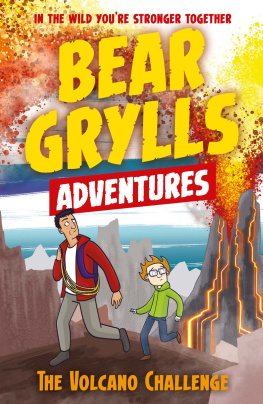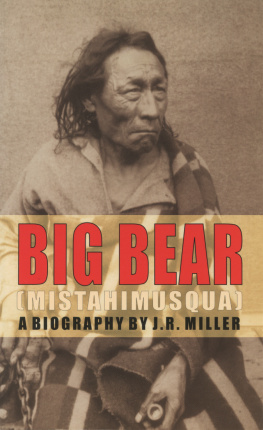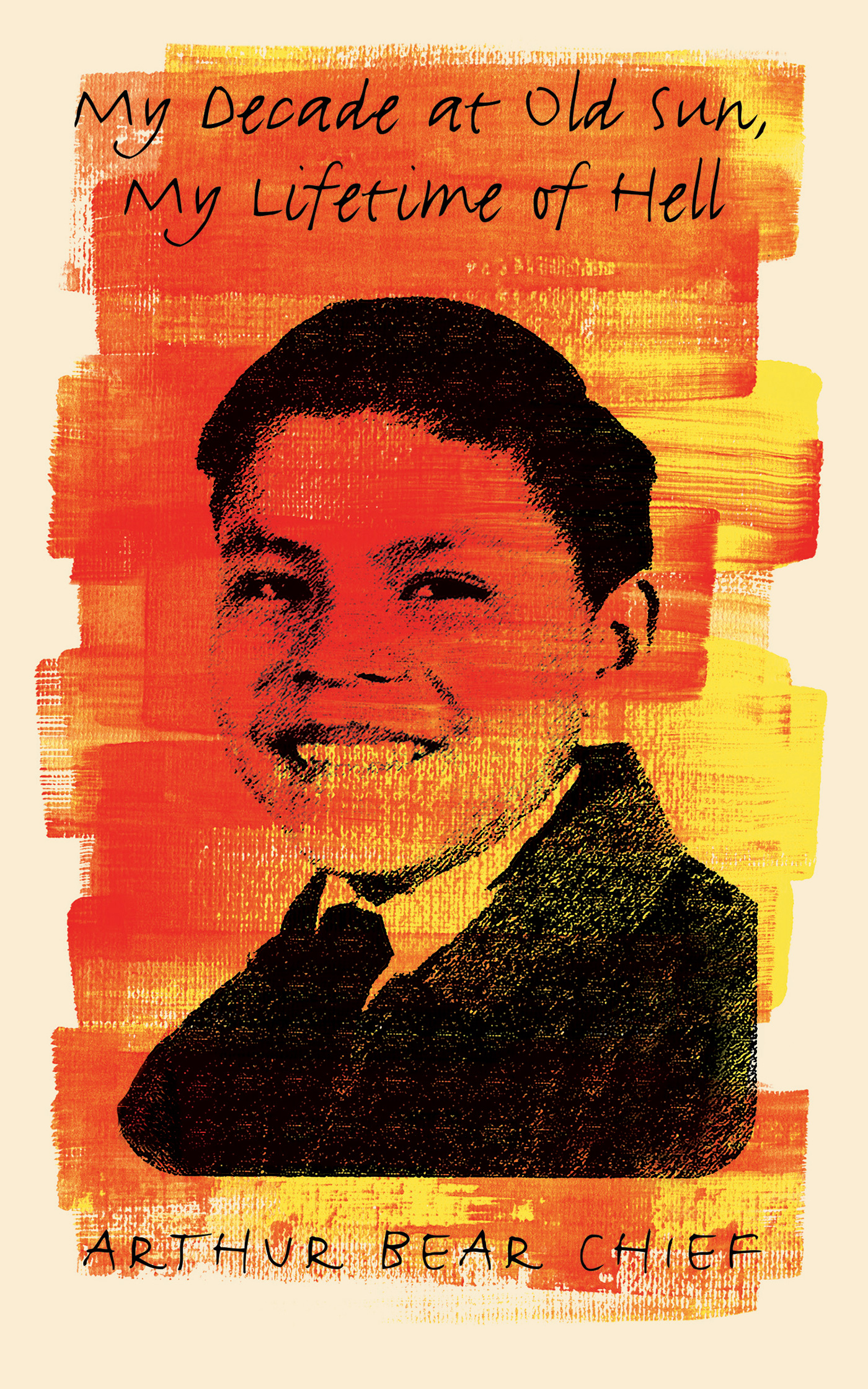Contents
List of Pages
Guide
My Decade at Old Sun,
My Lifetime of Hell
My Decade at Old Sun,
My Lifetime of Hell
ARTHUR BEAR CHIEF

My Decade at Old Sun, My Lifetime of Hell 2016 Arthur Bear Chief
Preface 2016 Judy Bedford
Afterword 2016 Frits Pannekoek
Published by AU Press, Athabasca University
1200, 10011 109 Street, Edmonton, Alberta T5J 3S8
ISBN 978-1-77199-175-9 (pbk.) ISBN 978-1-77199-176-6 (pdf)
ISBN 978-1-77199-177-3 (epub) DOI: 10.15215/aupress/9781771991759.01
Cover design by design by Marvin Harder, marvinharder.com
Interior design by Sergiy Kozakov
Printed and bound in Canada by Marquis Book Printers
Library and Archives Canada Cataloguing in Publication
Bear Chief, Arthur, 1942, author
My decade at Old Sun, my lifetime of hell / Arthur Bear Chief.
(Our lives: diary, memoir, and letters)
Issued in print and electronic formats.
1. Bear Chief, Arthur, 1942. 2. Abused Indian studentsAlbertaGleichenBiography. 3. Adult child abuse victimsAlbertaGleichenBiography. 4. Siksika IndiansAlbertaBiography. 5. Indians of North AmericaAlbertaResidential Schools. 6. Old Sun Indian Residential School (Gleichen, Alta.). 7. Siksika IndiansEducationAlberta. 8. Gleichen (Alta.). 9. Siksika IndiansSocial life and customs. I. Title. II. Series: Our lives (Edmonton, Alta.)
E99.S54B43 2016 371.829'97352 C2016-906831-5
C2016-906832-3
We acknowledge the financial support of the Government of Canada through the Canada Book Fund (CBF) for our publishing activities and the Canada Council for the Arts, which last year invested $153 million to bring the arts to Canadians throughout the country.
Assistance provided by the Government of Alberta, Alberta Media Fund.

Please contact AU Press, Athabasca University at for permissions and copyright information.

This book is dedicated to members of the Siksika community, many of them now deceased, who attended Old Sun Indian Residential School. May we who survive purge ourselves of our demons and move forward together.
ARTHUR BEAR CHIEF
SIKSIKA, ALBERTA
Contents
JUDY BEDFORD
FRITS PANNEKOEK
Preface
Arthur and I had our final book meeting on a bright sunny day in September 2012. There we sat at his kitchen table, just as we had so many times before, going over certain sections of the manuscript that seemed to me to need a little more detail. After about an hour, we looked at each other and, with big smiles, together proclaimed, Its finished! As I drove away from Arthurs home on the Siksika reserve, I thought about our meeting and about the power of his memoryhis ability not only to recall but to relive specific moments in his life and to analyze the emotions he experienced. I felt honoured, once again, to have him as a friend.
My drive back to Calgary from Siksika seemed very short. Along the way, I reflected on my nearly three-year journey of collaboration with Arthur and contemplated my one remaining taska task that seemed unnecessary to me but that Arthur and his wife, Marie, declared essential. They expected me to write the story of the process from the very beginning, as they said. They wanted me to present an honest account of my collaboration with Arthur.
The process began with a phone call from my good friend Marie Bear Chief on a cold grey winter morning early in 2010. Marie was a long-time tipi holder at the Calgary Stampedes Indian Village where I was one of many white volunteers, and Marie and I had worked together on projects relating to cultural interpretation. That morning, however, Marie did not want to talk about the Indian Village. Instead, she turned to the topic of the Siksika Nations residential school survivors and the abuse that Arthur had experienced as a student at the Old Sun Indian Residential School. I knew from previous conversations with Marie that Arthur had received a settlement for the abuses he had suffered at the school, but this was the first time that she spoke of sexual abuse. Yes, Arthur had been sexually abused, and he wanted to make his experience public by writing a book about his life. As Marie explained, Arthur had asked her whether she knew anybody who might be able to provide a little help, and she had picked me. She said that she trusted me and that Arthur would trust me too. Now that was quite a compliment, but I wondered whether I could truly be of assistance. Would Arthur really be able to trust a woman with such a personal story?
But, since Marie seemed convinced that he would, I tucked my concerns away and focused my thoughts on Arthur, the writer. I did not question his abilities at all. I had first heard of Arthur many years earlier from Leo Youngman, the former chief of the Siksika Nation. In the late 1980s, Leo spearheaded the development of Blackfoot Crossing Historical Park, and, as a heritage planner for the Province of Alberta, I had the honour of working with him for many years. In 1989, with the help of funding from the province, Leo hired his son-in-law, whom he described as a man worthy only of the highest respect and an individual with considerable experience in the civil service, for a six-month term as project administrator. Leo insisted that I meet Arthur, so at the start of his term position, he and I shook hands, and, at the end, we spoke once on the phone. Arthur and I did not recognize each other when Marie introduced us at the Indian Village well over a decade later, and I said nothing to Marie about my earlier encounter with him. But at least then I knew which of Leos daughters had married the man Leo had called important.
Marie went on to ask whether I knew anything about how to secure a publisher in order to make Arthurs book available to the Siksika community and the general public. The only person who came to mindsomeone who knew publishing and could, I felt, be trusted with Arthurs storywas Frits Pannekoek, an historian with a background in Indigenous cultural heritage. When we spoke, he volunteered to help. Suffice it to say that before noon on that gloomy winter day, I was able to call Arthur and let him know that he had both a helper and the support of someone who was enthusiastic about the book and could advise him about finding a publisher.
Arthur talked about his writing process and why he had asked for assistance: simply put, this was the first time he had attempted writing a book, and he was not sure whether what hed written was publisher-ready. We agreed to meet at his house, so that he, Marie, and I could discuss the project and Arthur could give me copies of what he had written. During our next phone conversation, Arthur summarized his residential school experiences, including some graphic descriptions of abuse. My worries about whether he would trust me vanished. Arthur Bear Chief is a powerful storyteller, and his words, even at this early stage, affected me deeply. The very beginning of the project was complete.
Shortly thereafter, I sat down with Arthur and Marie to learn more about the book and why Arthur wanted to write it. I left with copies of Arthurs writings and my promise to do a little rearranging and minor editing before sending the material to Frits. Those initial writings revealed Arthurs very compelling style of storytelling, one that evoked in me a wide range of emotional responses, as well as a genuine interest in his lifes story.











